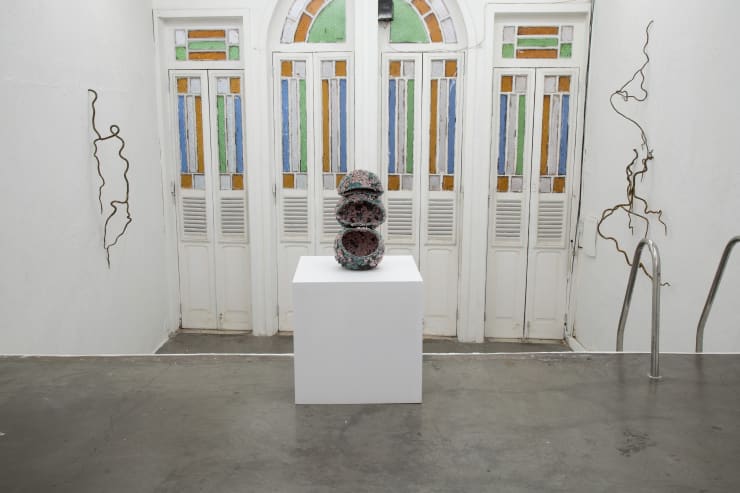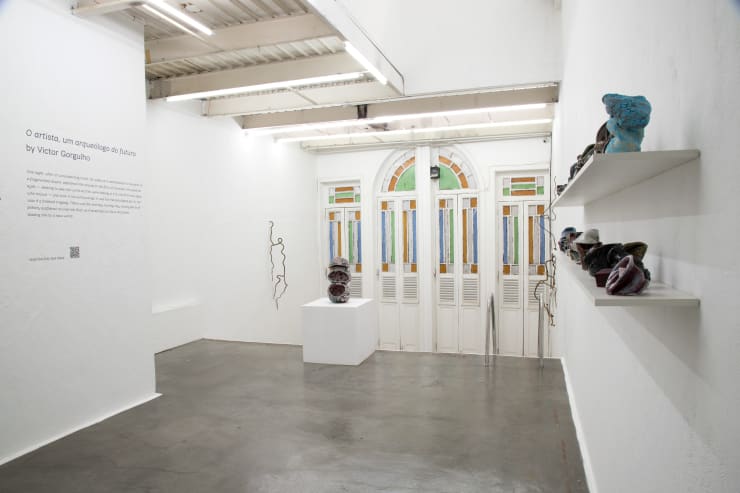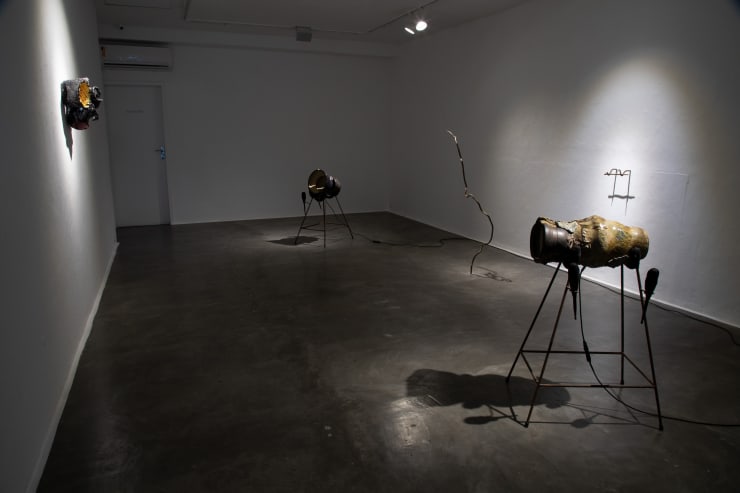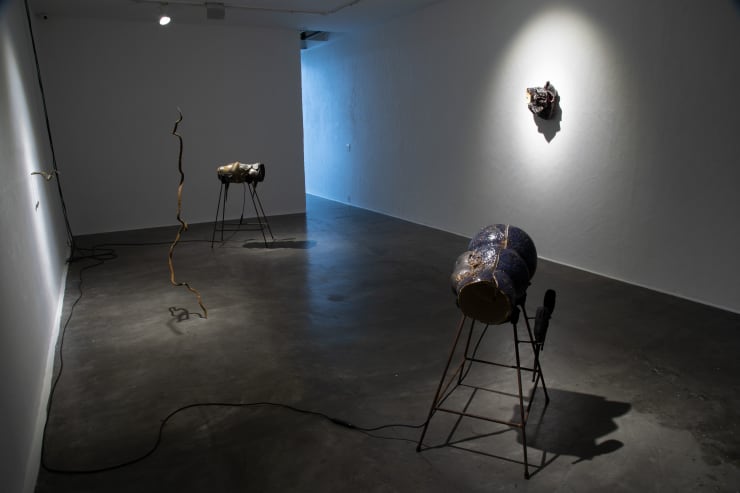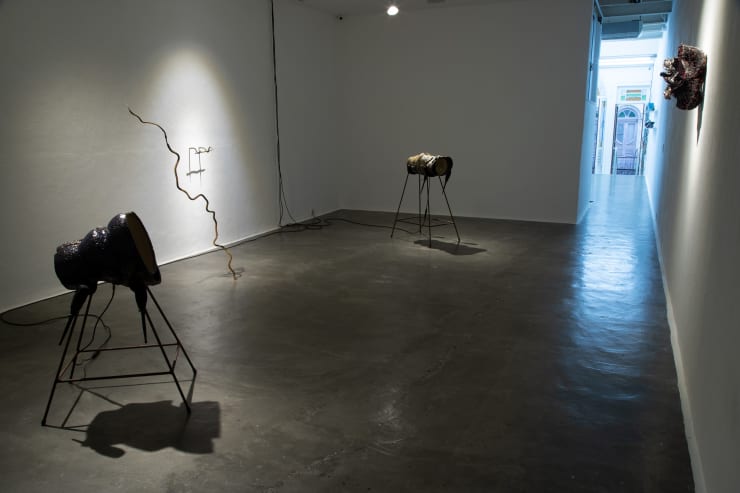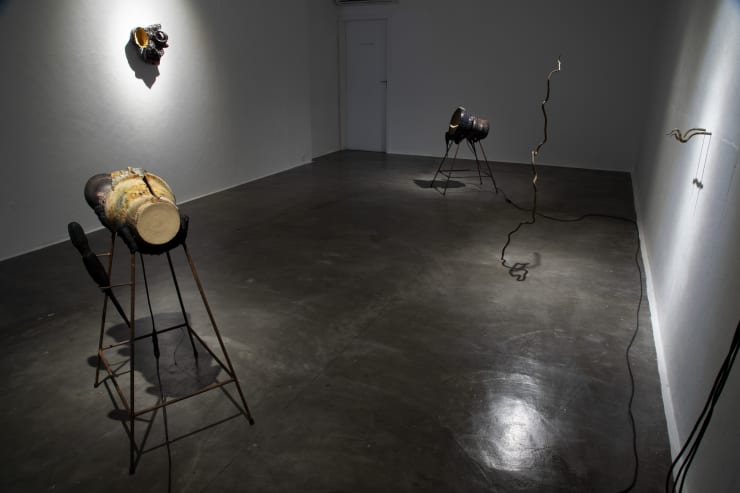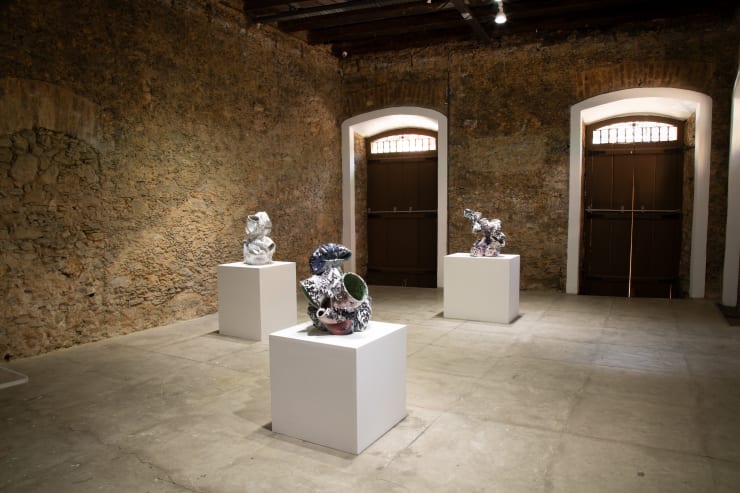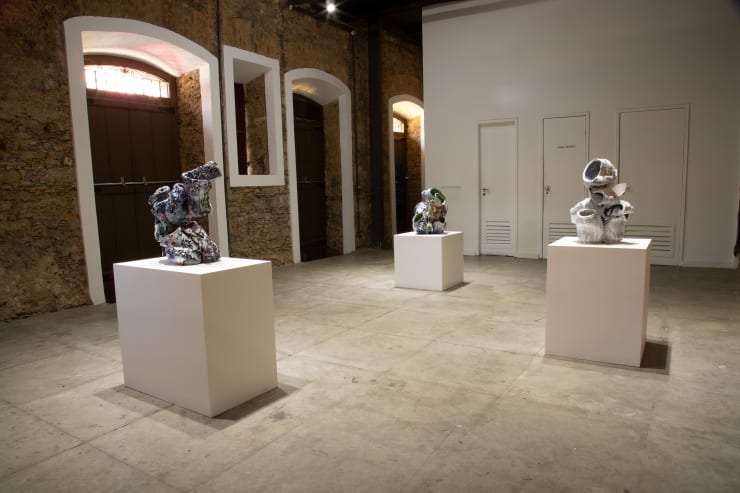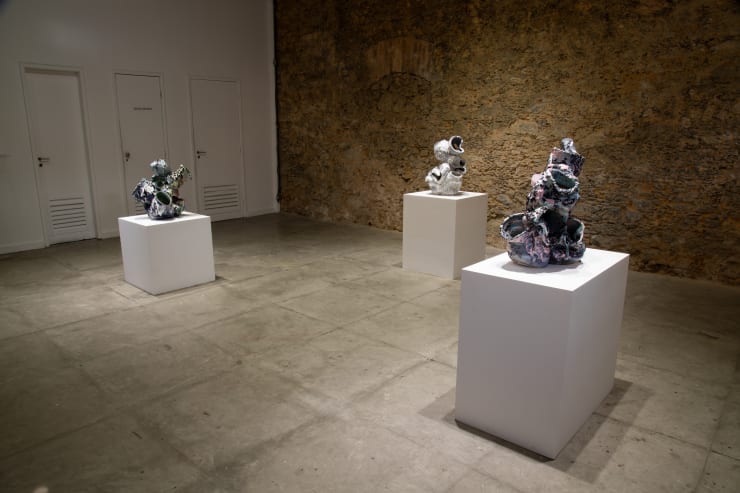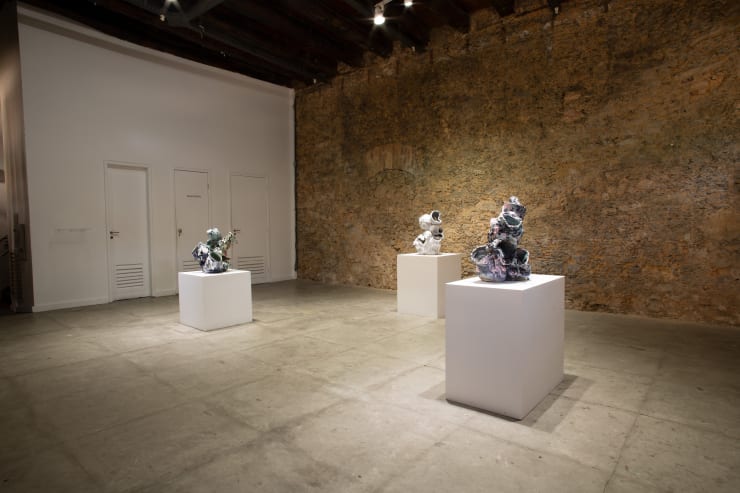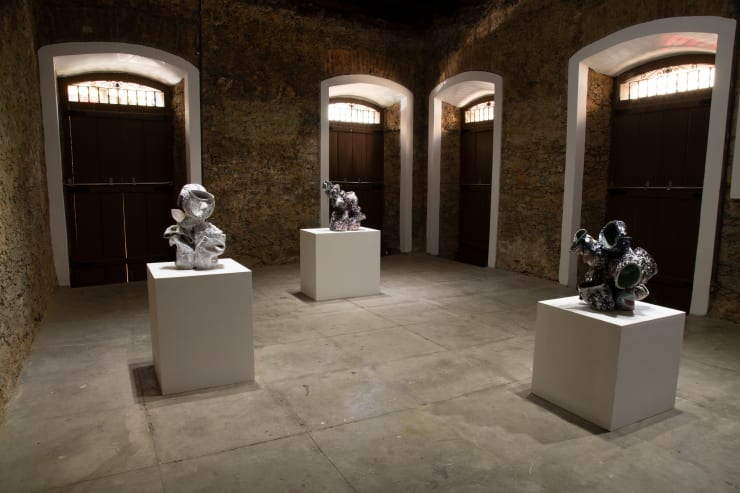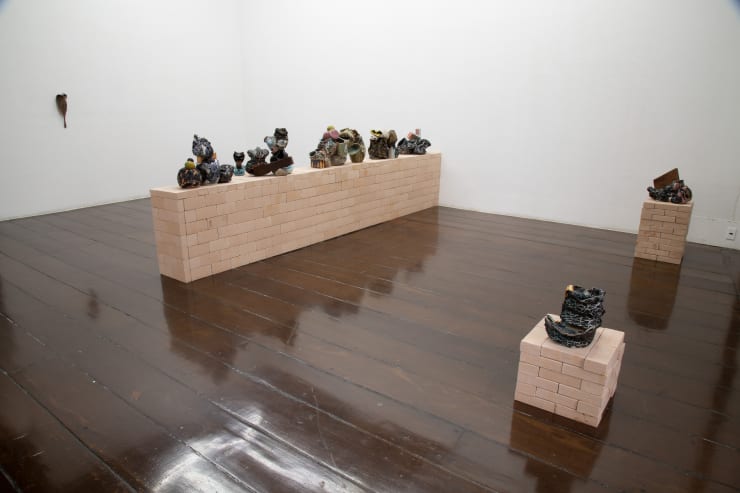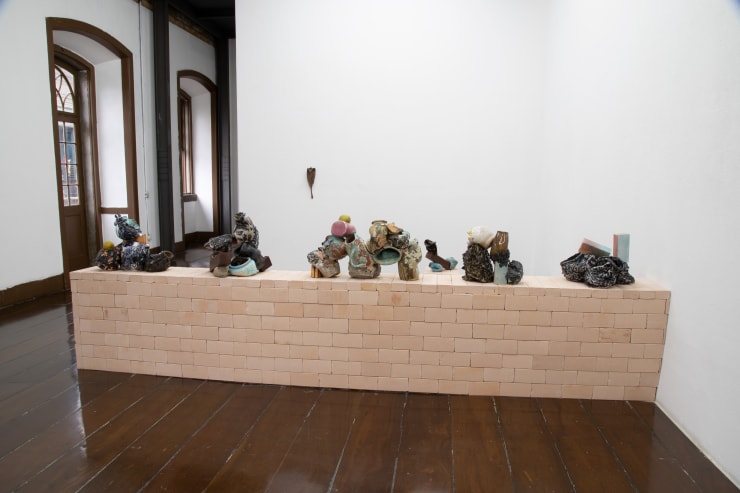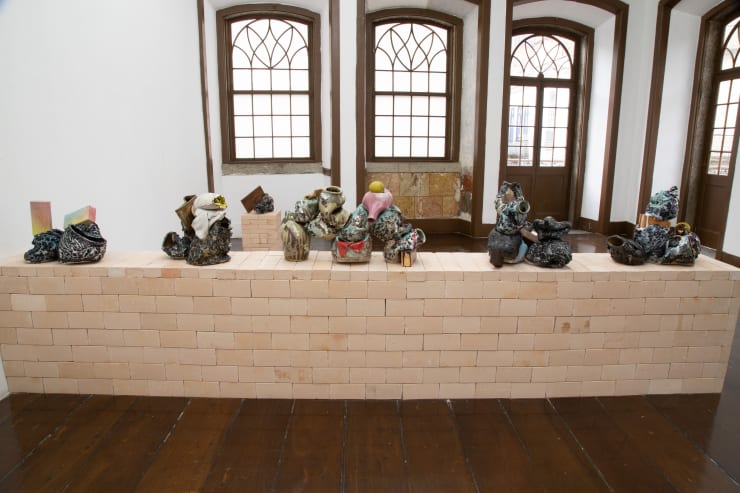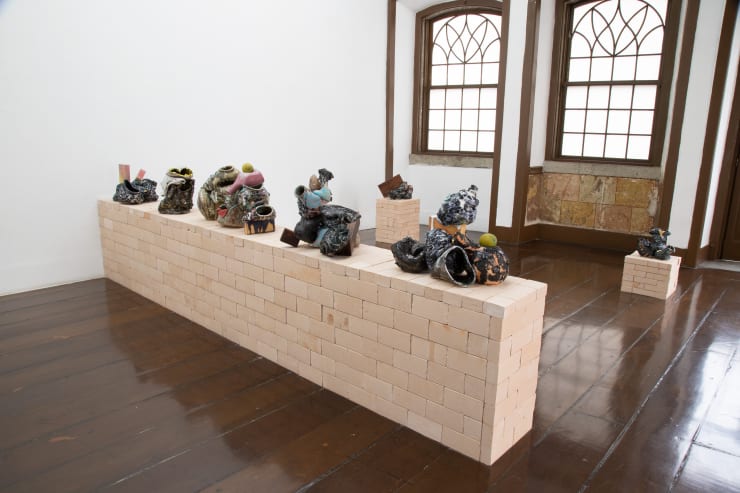Rodrigo Torres | Livro de Quartzo
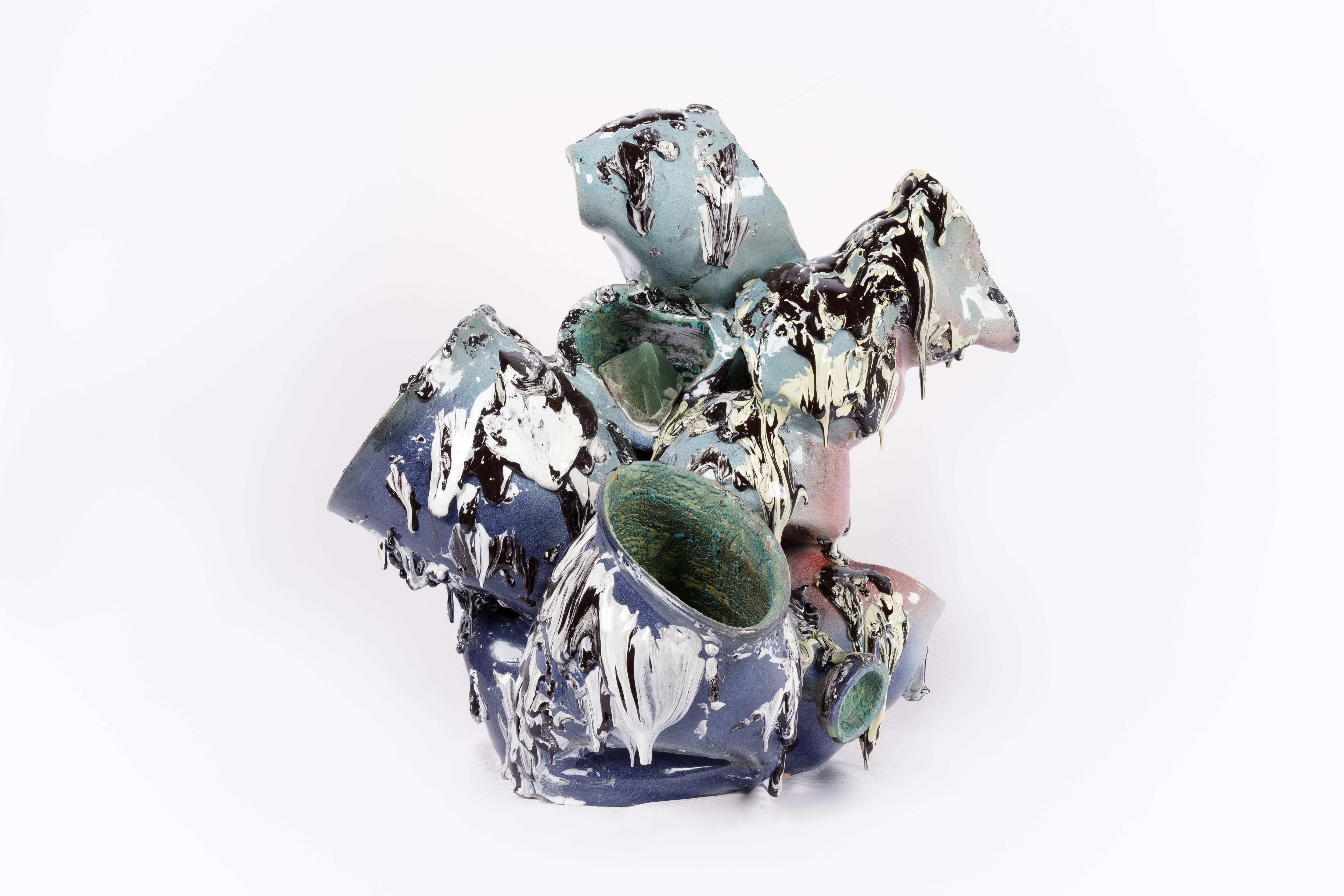
Rodrigo Torres | Drusaliva, 2022
A Gentil Carioca is pleased to present the solo exhibition Livro de Quartzo [Quartz Book], by Rodrigo Torres.
-
The artist, an archeologist of the future
By VIctor Gorgulho
One night, after a sudden bang, he woke up startled, still entangled in a fragmented dream, now lying shattered on the dirty floor of his studio. He rubbed his eyes — trying to see the world as if for the first time again, perhaps — and took in the environment around him. In disbelief, he briefly glanced at the damage the ceramic oven had caused to his studio. It was not the apocalypse itself, nor a foretold tragedy. There was fire and mud, burning clay, chunky shards of ceramics scattered all over the floor, spread out like a red carpet welcoming him into a new world.
Inert, perfectly unafraid, he rehearsed his first short steps towards the back of the room, from where a weak glow seemed to flicker in delicate beams of light that reached his tired eyes from afar. He wondered, of course, about the nature of that surreal scene and setting — was he really not still asleep, deep in his dreams?
He approached cautiously until he came across them, his own creatures. Far away, so close: familiar figures that were, at the same time, so autonomous from one another. Intact daughters of an accidental homemade Big Bang, modeled by his own hands (he hadn’t forgotten that, he was sure of it), now flickering in a constant frenzy. A quartz rock in the midst of one of the ceramic pieces. It was there, everything was there, there was no doubt about it. Dream and reality were no longer distinct and opposite poles battling for the verisimilitude of what he was witnessing. He knelt down before his children, as the almost unbearable urge to touch their skins and crevices overtook him. It was like the first landscape, a Garden of Eden right there in his workplace and home. Eternal sunshine of blinded memories.
An alarm goes off, bringing a scorching disappointment. He was now really waking up to cold reality, nothing like the high temperatures of the ceramic oven that burnt his ceramic pieces. Disillusionment and mockery, fever and rage. What had just happened? He bent over abruptly, searching for a nook of the bed where dreams and nightmares would leave him alone. He sunk back into a deep sleep, still disturbed by the images that had just before occupied his sight.
When the sun finally rose, his body also rose, panting, ready for another day of labour. He rubbed his eyes once more, repeatedly. A familiar glint once again reached him from afar. There they were, intact, in their different shapes and sizes, imbued with the peculiar beauty that only fire can sculpt. He smiled shyly and breathed a sigh of relief. His creatures were still there, stars bathed in the spotlights of an enormous theatrical stage: life itself, real and concrete.
***
The current exhibition is named Livro de Quartzo (‘Quartz Book’), in reference to the homonymous work produced by the artist last year, and invites us to look closely (at times very closely, don’t be shy) at the latest works by Rodrigo Torres. Livro de Quartzo reveals to the audience an artist in a convulsive and cathartic state of creation. During the last years, Torres dedicated himself to expanding the multiple possibilities of his longtime ceramic practice by experimenting with different firing, modulation, and pigmentation processes in the pieces gathered here.
Historically, the practice of ceramics dates back to intense processes of cultural, affective, and monetary exchange. The making of vases, tiles, and other such pieces has been practiced since around 9000 BCE. Even so, up to this day, the medium of ceramics is, in a way, disregarded in the arts, outshined by the oil painting tradition. Now look at the outdated hypocrisy: the pictorial mass that has perpetuated as the most prestigious material in the practice of painting all around the world was not conceived by the Van Eyck brothers until the fifteenth century, long after ceramic pieces were already circulating around the globe, used in the making of all kind of murals, houses, and ornaments. If contemporaneity — and therefore the artistic output it produces — has already, a long time ago, questioned this strict and limiting differentiation of the possibilities of art making, then why is ceramics still arrogantly snubbed and not endorsed as the proper artistic medium that it always has been? Silly contradictions, we know…
It was in the 1940s, for example, while still a young man, that the Pernambuco artist Francisco Brennand left his family’s ceramic factory, where he worked, to venture into artistic incursions in Europe, seeking to get closer to the work of names that were already emblematic back then: Pablo Picasso, Joan Miró, and Antoni Gaudi. What a surprise then, for Brennand, when he saw with his own eyes that the works of these artists and his other idols were made in… err… ceramics? Back in Brazil, it didn’t take him long to start his immense and fertile production of sculptures, totems, murals, and more. Convinced, therefore, that ceramics are not inferior to other artistic media, he went on to become a prominent figure in the history of Brazilian art, for his work as much as for his peculiar production model, carried out on an almost industrial scale at his farm, a mix of factory and studio, on the outskirts of Recife.
***
If Rodrigo Torres’ virtuosity has already been proven on many other occasions, Livro de Quartzo allows us to see an expansion of the artist’s body of work that is not only technical, but also conceptual. Suspended by a metal apparatus, the two works that occupy the back room of the Gentil Carioca building, invite the audience to experience their unsuspected sonic and musical potential. In the front room, in addition to the delicate vases displayed on shelves that stress the ‘decorative’ dimension of ceramics, the artist exhibits sculptures that suggest the shape of tree branches — vertical steel structures modulated and also fired in the ceramic oven.
A process mostly guided by chance and by surprises of all kinds, the firing of works in the oven located in the artist’s studio-home in Rio de Janeiro, is responsible for delivering absolutely unexpected final products to their creator. Fire is capable of causing cracks, fissures, melted sections, and many other effects that escape Torres’ absolute control. It is precisely there, however, where the vapor barato (‘cheap steam’) of the laborious process resides. Once delivered to the flames, the different natural minerals that — mind you — had just been bathed in water and air-dried, come out of the firing oven as surprising and uncontrollable beings. Despite their creator’s wishes, they take over the world with their unique opulence and autonomy. Or, in a less optimistic but frequent scenario, they fall apart in front of the artist, in a kind of Russian-roulette between life and abrupt death: building up or breaking down, no options in between.
Once they are modeled, twisted, and sculpted, the ingenious sculptures take on different shades of pigmentation from the most diverse tones and hues, also enabled by natural materials of different origins. Back in the oven, they become even more fantastical, elaborate, theatrical creatures. Enveloped by flames, they echo the process that took place long before, in the depths of Earth itself — where the fusion of minerals can, for instance, unleash long sedimentation processes that will produce rocks in the end. Ornamental stones, ready to be displayed in the endless spectacle of nature, or surrounded by the walls of the white exhibition cube. The setting itself is not the problem. They are always and inevitably presenting themselves as sweet natural beings, capable of suggesting ana- or zoomorphic creatures. Mouths slowly devouring us.
Without realizing it, we’re back on Earth, on the ground, at the beginning of everything. For what is the planet, if not a vast archeological site with countless sedimented beauties on top of so many others? As creatures that will certainly resist the inevitable human devastation, Rodrigo Torres’ sculptures seem to smugly tell us, softly and with a sarcastic tone: your day will come; we, on the other hand… we will stay here.
The artist — and we, as well— have definitely woken up from the nightmare-dream that enraptured us earlier. We’ve calmly run our eyes over the exuberant sculptural body exhibited here, perfectly static, always in the exact same place. One by one, and all together in a baffling collective beauty of enigmatic beings, they seem to fear nothing and no one. They are made of fire, water, air, and earth, like us. But, unlike them, we will succumb soon, we will disappear in droves, expelled from the territory we so stubbornly insisted on exploring. They won’t.
-
A Gentil Carioca | Rio de Janeiro
Opening | April 30, 2022 | 4pm - 9pm
Visits until July 30, 2022
Tuesday to Friday | 12pm - 6pm
Saturday | 12pm - 4pm

